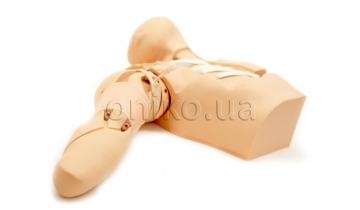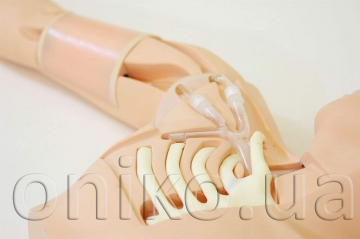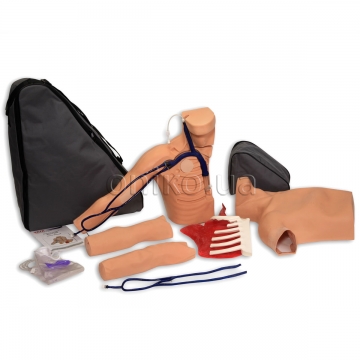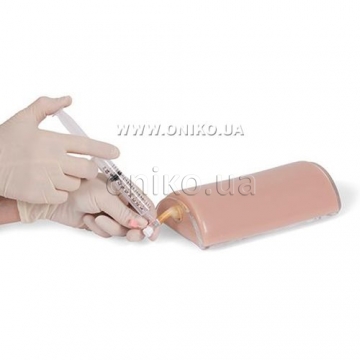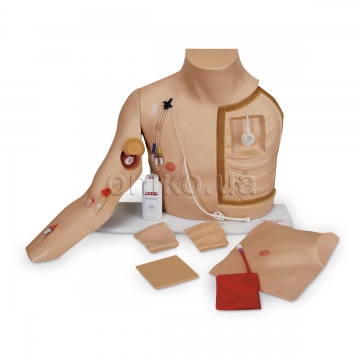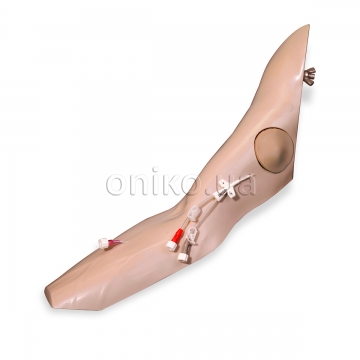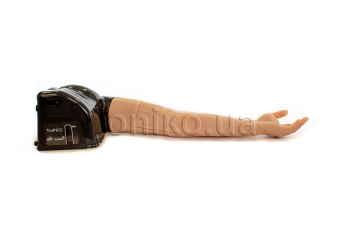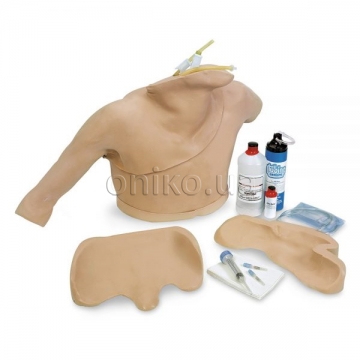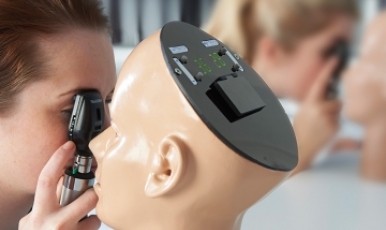Ultrasound-Guided PICC Training Simulator
It has been recognized that a peripherally inserted central catheter is a safer approach to placing the
catheter in the center line, and the use of ultrasound is recommended to reduce the risk to patients. This
simulator is a training tool that provides training for all procedural skills from needle insertion, catheter
manipulation to placement of the distal tip in the superior vena cava. Both the subcutaneous medial arm
vein and the subcutaneous lateral arm vein are prepared for access for different levels of cannulation
testing. Anatomically accurate branching of the veins in the upper part of the chest provides realistic
resistance of the vein walls, as well as the possibility of modeling the incorrect placement of the catheter
in the internal jugular vein, thoracodorsal vein or subclavian vein. The simulator for catheterization by the
central catheter which is entered peripherally
catheter in the center line, and the use of ultrasound is recommended to reduce the risk to patients. This
simulator is a training tool that provides training for all procedural skills from needle insertion, catheter
manipulation to placement of the distal tip in the superior vena cava. Both the subcutaneous medial arm
vein and the subcutaneous lateral arm vein are prepared for access for different levels of cannulation
testing. Anatomically accurate branching of the veins in the upper part of the chest provides realistic
resistance of the vein walls, as well as the possibility of modeling the incorrect placement of the catheter
in the internal jugular vein, thoracodorsal vein or subclavian vein. The simulator for catheterization by the
central catheter which is entered peripherally
Features
- Excellent image quality and visualization of the needle tip with venous access under ultrasonic control
- Movable shoulder allows you to train in arm positioning to avoid possible incorrect placement of the
catheter
- Provides training in all procedures from needle insertion to catheter tip placement
- Confirmation of successful venous access
- To determine the length of the catheter and to anatomically understand the correct placement of the tip of
the catheter in the simulator included ribs and right clavicle
- Anatomically correct bifurcation of veins
- Possible imitation of incorrect cannula placement
Habits
- Patient placement
- Choice of puncture site
- Venous access under ultrasonic control
- Introduction of the conductor and dilatation
- Cannulation

